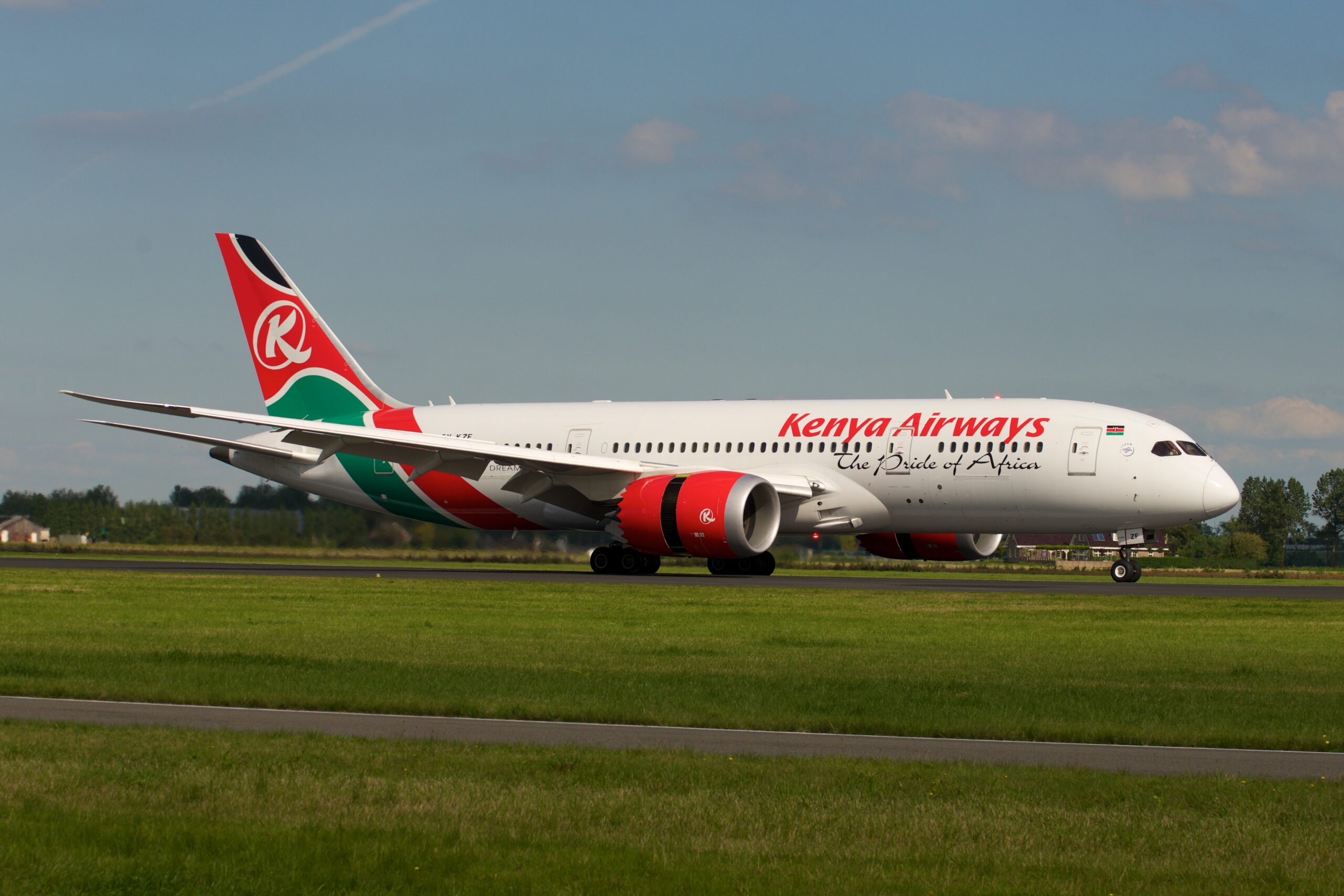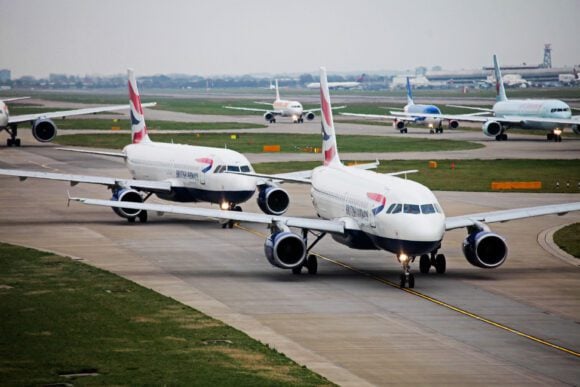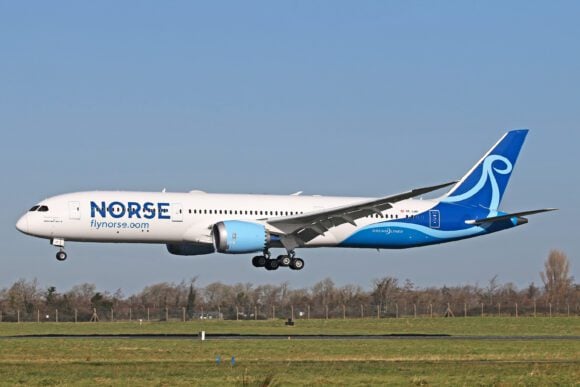
KenyaAirways787 1 scaled
Kenya Airways announced its FY25 earnings will be at least 25% lower than FY24, blaming three grounded Boeing 787-8 aircraft, engine shortages, and global parts constraints. This could strain African routes and prompt route cuts, exacerbating capacity issues during the holiday peak.
Kenya Airways issued a formal profit warning on November 27, 2025, signaling a challenging end to the year amid persistent operational hurdles. This update builds on the airline’s earlier half-year results, which had highlighted mounting pressures.
Background and Timeline of the Groundings
The issues stem from ongoing maintenance delays on the airline’s Boeing 787-8 fleet, powered by GE Aerospace GEnx-1B engines. Here’s a quick chronology:
- Early 2025: Initial groundings begin due to engine overhauls, which have extended from 60 days to 90-120 days per engine amid global supply chain bottlenecks.
- March-June 2025: Up to three of KQ’s nine 787-8s (33% of its wide-body fleet) sidelined, forcing route adjustments and capacity cuts. This affects long-haul routes to Europe, Asia, and the Americas.
- July 2025: One grounded 787 returns to service, but the remaining two stay parked.
- August 2025: KQ reports 1H25 results, swinging to a net loss of KSh 12.15-12.2 billion (~$94 million), reversing a KSh 513 million profit from 1H24. Capacity drops 16% year-over-year, with passenger numbers down 14% and Revenue Passenger Kilometers (RPKs) falling 19%.
- November 2025: With groundings persisting, KQ forecasts full-year earnings at least 25% below FY2024’s levels, citing “engine availability constraints and constrained supply of spare parts in the global market.”
These aren’t isolated to Kenya Airways, similar engine woes hit other operators of GEnx-powered 787s, though KQ’s reliance on the type (average fleet age: 14.3 years across 35-42 aircraft) amplifies the pain. Interestingly, CEO Allan Kilavuka is ex-GE.
Company Response and Recovery Plans
Kenya Airway’s leadership, including CEO Allan Kilavuka, remains “committed to recovery efforts.” The key initiatives include:
- Fleet Restoration: The two remaining 787s are slated to return “later in the year,” potentially easing holiday-season pressures.
- Cost Controls: Inflation and fuel volatility mitigation through operational tweaks.
- Strategic Moves: Pursuing partnerships, capital raises, and route optimizations. One grounded aircraft’s July return is a “positive note,” with robust international demand signaling brand strength.
- Longer-Term: Modernizing the fleet (e.g., via recent 737 additions) and leveraging Africa’s growth as a hub for global connections.
Assessing Credibility of Kenya Airways Management
Kenya Airways’ (KQ) management, led by CEO Allan Kilavuka since April 2020, has faced significant scrutiny amid the airline’s ongoing financial struggles, including the recent FY2025 profit warning. The management team generally is regarded as competent.
Strengths in ethical signaling and peer recognition bolster Kilavuka’s personal credibility, but systemic losses and disputes chip away at collective trust. Management is transparent about headwinds but is criticized for slow recovery. No evidence of personal malfeasance (e.g., embezzlement) emerges, unlike some peers.
African Context
Africa’s aviation sector is invariably at a pivotal moment, blending growth potential with entrenched challenges. Representing just 2.2% of global passenger traffic despite 18% of the world’s population. African commercial aviation is poised for expansion driven by economic integration, rising middle-class demand, and infrastructure investments.
However, issues like blocked funds, high costs, and uneven connectivity could temper progress. In short meddling and incompetent African governments stand in the way of progress. There is too much state involvement in flag carriers and the need to protect these failing enterprises. Privatization isn’t an option because that cuts opportunities like “jobs for pals”, free flights for politicians and other graft.
An MRO Opportunity?
Looking across the continent there are several airlines that desperately need MRO support. Parked A220s are ideal examples. MRO is a critical pillar for Africa’s aviation sector, where an aging fleet, rapid traffic growth, and infrastructure gaps amplify demand.
The continent’s average fixed-wing aircraft age exceeding 15 years and ~75% of projected fleet growth by 2025 stemming from used aircraft acquisitions, MRO services are essential to ensure safety, reduce downtime, and cut reliance on costly foreign providers. The Kenyan 787s are just more evidence that regional MRO is a huge opportunity.
African currencies are generally weak against the US dollar and Euro. Since most of the African MRO work ends up outside the region, the cost is higher than it should be. Overall, MRO needs in Africa are acute yet opportunity-rich: A 4–5% CAGR signals $500M+ in added value by 2030 if investments in training and tech accelerate.
Views: 0




